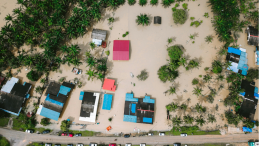Recent drought events in Europe have shown that impacts are not only limited solely to agriculture, but instead affect multiple sectors and can lead to widespread societal challenges. As Europe is heading towards a future with more extreme summer droughts, understanding drought risks is key to reduce possible impacts. Among the numerous initiatives launched by the European Union to address drought risk, the European Drought Observatory (EDO) portal provides updated information on drought risk and impacts by tracking a variety of indicators for the entirety of the EU27 countries. However, the EDO has thus far mainly focused on risks for the agricultural sector. In this context, the “European Drought Observatory for Resilience and Adaptation (EDORA) – Lot 1” project aims at widening the scope of the EDO portal by (1) producing a detailed drought impacts database, (2) developing and testing a methodology to assess drought risks in connection to multiple sectors (also considering future scenarios), and (3) compiling relevant information in a drought risk atlas at the EU27 level.
Funded by the European Commission’s Directorate-General for Environment (DG-ENV) and involving the Joint Research Centre (JRC) as primary beneficiary, the project is composed of five partners: the Centro Internazionale in Monitoraggio Ambientale (CIMA) foundation (project lead), the Albert-Ludwigs-Universität Freiburg, the Vrije Universiteit Amsterdam, the Global Change Resource Institute (CzechGlobe), and United Nations University – Institute for Environment and Human Security (UNU-EHS). In particular, UNU-EHS will focus on identifying persisting gaps in drought risk and impact assessments in the EU27 countries, and on advancing our understanding of multiple, interconnected drought risks through the development of conceptual models of drought risks based on literature review and expert consultations.



